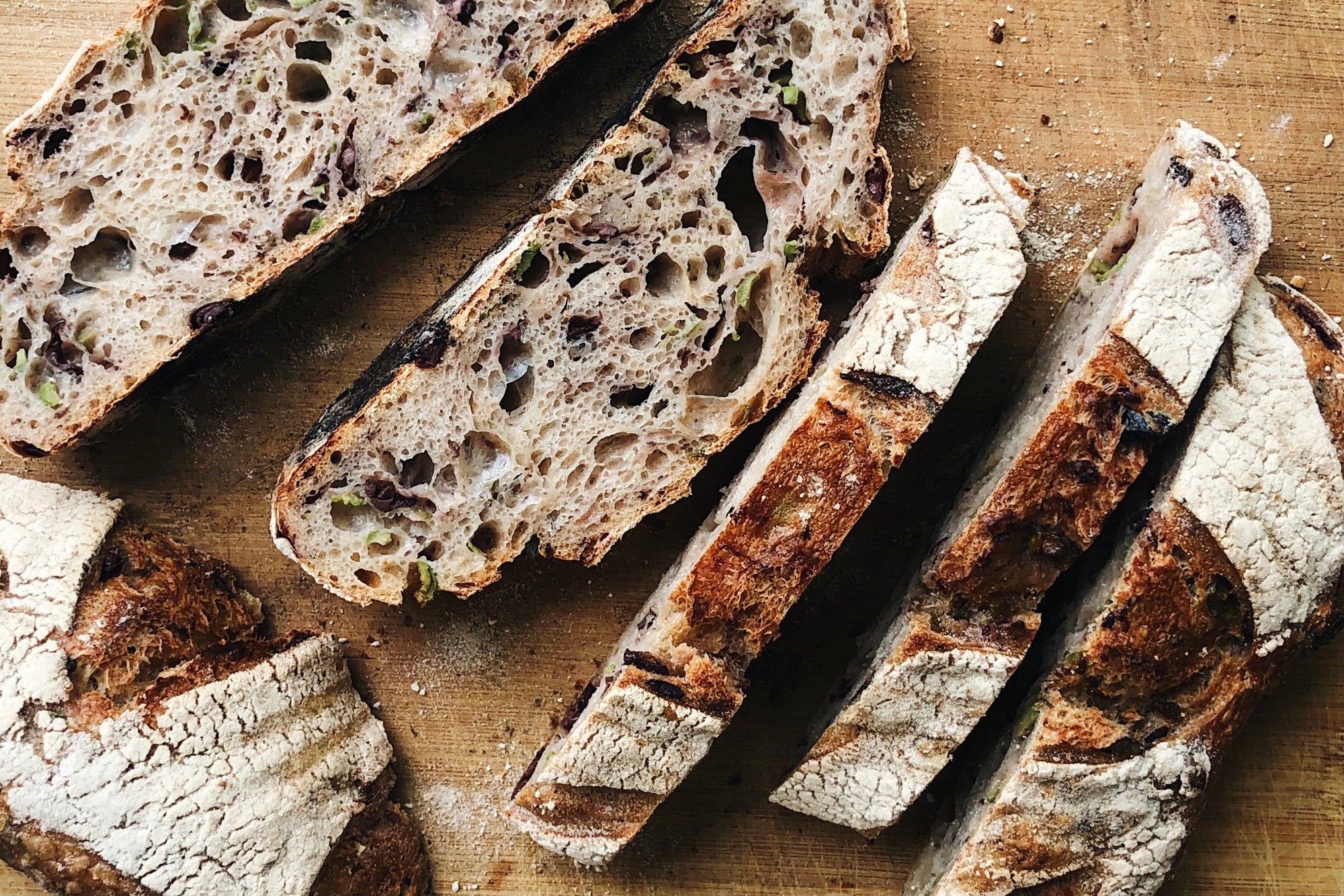Want to make a stunning olive loaf? Maybe a loaf loaded with nuts and dried fruit? We love adding inclusions to our Basic Sourdough Boule to mix things up and add interest to a classic loaf. Some examples of inclusions are dried fruit, seeds, nuts, cheese, herbs and of course, olives.
A good rule to follow is to use Baker's Percentages when calculating how much of the chosen inclusion to add to your loaf. We like to start with 20% and increase or decrease if necessary. Read on for our easy guide to adding delicious inclusions to your favourite bread recipe.
Adding Inclusions To Sourdough:
Here's how to create a basic olive loaf. The amount of flour in the Basic Sourdough Boule recipe is 440 grams so you would, therefore, add 88 grams of olives to your dough (440 grams x 20% = 88 grams). At the bakery, we use a mix of Castelvetrano and Kalamata olives in our popular olive loaf. It's incredibly delicious!
Now that you have calculated the weight of the inclusions you are adding to the loaf you are ready to begin mixing.
We recommend adding the inclusions when you perform the third fold. This is for two main reasons. First of all, waiting until the third fold gives the dough times to develop its gluten strength without being hindered by the inclusions. Some inclusions will tear at the gluten strands, which can weaken them. Second, adding them any later will deflate the dough too much and there won't be enough time after for it to bounce back.
The process for mixing your dough and adding inclusions should be as follows:
Autolyse
Combine flour, water, and sourdough starter and mix until combined. Let sit for 30 minutes.
Adding Salt + First Fold
Add salt and a small amount of water and mix until incorporated. Perform first fold and let sit for 30 minutes.
Second Fold
Perform second fold and let sit for 30 minutes.
Third Fold
Before you perform the third fold add the inclusions and squeeze into the dough the same way you added the salt. Do not worry if they are not very evenly distributed as the next folds will mix them in even further. Perform the third fold and let sit for 30 minutes.
Shaping + Baking
Continue on with folds and rests and shape as you would the Basic Sourdough Boule. Baking is the same but note that you may need to increase the length of time if you have inclusions that contain a lot of moisture. Checking the internal temperature is recommended if you are unsure. The temperature should be between 190°F and 200°F.
Note: if you are adding an ingredient that has a lot of moisture in it, you may find it necessary to lower the amount of water in your dough slightly. Olives are a good example of ingredients with high amounts of moisture.
Let us know if you have any questions in the comments! We are always happy to help!



Comment
Thank you for a great article and especially for the 20 percent rule! I have two questions: I use a slow rise method for my sour dough with four folds and two 12-hour refrigerated rises. The bread turns out great, except when I use inclusions, they are bunched into a corner. Would it be correct to add inclusions after the first of the two 12-hour refrigerated rises, which is the third fold? The bread has turned out good, except that the inclusions are all bunched up in one corner. 2. Adding raisins only seems to get them roughly evenly distributed when I lay out the dough and evenly spread the raisins and cinnamon, then roll up the dough once. If I then fold it crosswise into a boule shape, all the inclusions end out bunched up.